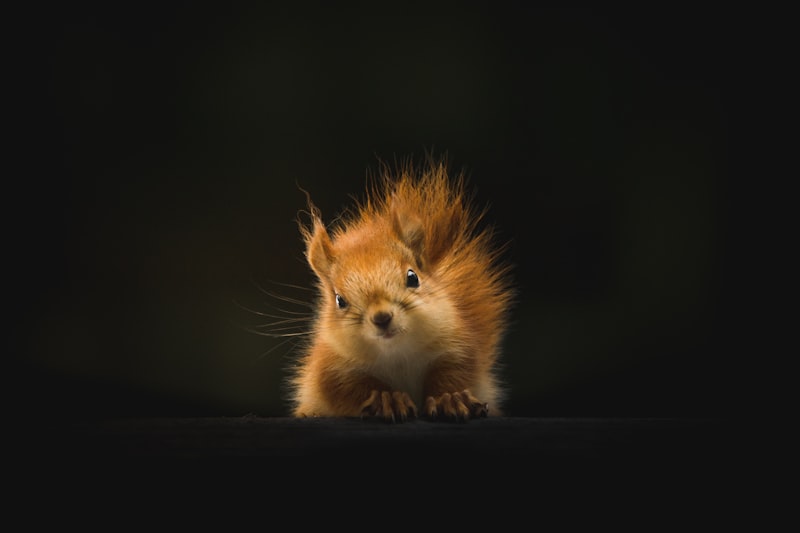
One of the primary objectives of endangered species recovery programs is habitat restoration. This involves identifying and protecting critical habitats where endangered species live, breed, and feed. Conservationists work to restore degraded habitats, replant native vegetation, and create corridors that connect fragmented habitats, allowing species to move and adapt more freely.
Another essential aspect of these programs is captive breeding and reintroduction efforts. For species that are on the brink of extinction, captive breeding programs provide a lifeline by breeding individuals in controlled environments like zoos or specialized facilities. Once populations are stable, conservationists carefully reintroduce these animals back into their natural habitats, ensuring they have a better chance of survival.
Education and community involvement are also integral to the success of endangered species recovery programs. Raising awareness about the importance of biodiversity conservation helps garner support from local communities, governments, and international organizations. Engaging communities in conservation efforts empowers them to take ownership of their natural resources and promotes sustainable practices that benefit both wildlife and people.
Monitoring and adaptive management are critical components to assess the effectiveness of recovery efforts. Conservationists use scientific research and monitoring techniques to track population trends, habitat health, and the impact of conservation actions. This data informs adaptive management strategies, allowing conservationists to adjust their approaches based on new information and changing conditions.
From Brink to Blossom: Success Stories in Endangered Species Recovery
Imagine a world where the magnificent creatures we share this planet with are on the verge of disappearing forever. The plight of endangered species has captured global attention, but amidst the grim statistics, there are stories of hope and resilience that deserve to be celebrated.
One such success story is the remarkable recovery of the California condor. Once facing extinction with only 22 individuals left in the wild in the 1980s, intensive conservation efforts have seen their population soar to over 300 birds today. This incredible turnaround was made possible through a combination of breeding programs, habitat restoration, and ongoing monitoring to protect these majestic birds from threats like lead poisoning and habitat loss.

Another inspiring tale comes from the island of Mauritius, home to the Mauritius kestrel. With just four birds left in the 1970s, dedicated conservationists implemented captive breeding programs and successfully reintroduced the birds into the wild. Today, the population stands at around 300 individuals, a testament to the power of concerted conservation efforts and community involvement.
The story of the southern white rhinoceros is equally heartening. Hunted nearly to extinction for their horns, conservation organizations rallied together to protect remaining populations and crack down on poaching. Through strict anti-poaching measures and habitat management, their numbers have rebounded significantly, offering a glimmer of hope for their long-term survival.
These success stories underscore the importance of international cooperation, scientific research, and public awareness in preserving biodiversity. They remind us that with determination and collective action, we can make a real difference in the fight against species extinction.
The Race Against Extinction: Inside Global Recovery Efforts
One of the key strategies in these global recovery efforts is the establishment of protected areas. These designated zones act as sanctuaries where endangered species can thrive without the threat of human interference. By preserving these habitats, we not only safeguard the survival of iconic species but also protect the delicate balance of our ecosystems.
Conservation breeding programs are another vital component of the effort. These programs focus on breeding endangered species in controlled environments, such as zoos or specialized facilities, with the goal of eventually reintroducing them into the wild. It’s like creating a safety net for species on the brink, giving them a chance to recover and rebuild their populations.
Moreover, international collaborations play a crucial role in these efforts. Countries come together to share knowledge, resources, and strategies to tackle global challenges like poaching and illegal wildlife trafficking. These partnerships amplify the impact of conservation initiatives, ensuring that efforts are coordinated and effective across borders.
Education and awareness also form a cornerstone of global recovery efforts. By empowering local communities and raising awareness worldwide, we foster a culture of conservation and respect for nature. This is not just about protecting individual species but about cultivating a mindset that values biodiversity and understands its importance to our own well-being.
Every action counts in the race against extinction. Whether it’s supporting sustainable practices, advocating for stronger environmental policies, or simply spreading the word, each of us has a role to play in preserving the rich tapestry of life on Earth. Together, we can make a difference and ensure a brighter, more sustainable future for generations to come.
Hope for Wildlife: Innovations Driving Endangered Species Recovery
Imagine a world where endangered species like the Amur leopard or the Sumatran rhino thrive once more. This vision is becoming increasingly achievable through dedicated efforts. Conservationists are harnessing cutting-edge technologies such as genetic engineering and advanced tracking systems to monitor and protect vulnerable populations. These tools provide invaluable insights into animal behaviors and habitats, enabling proactive conservation strategies.
Moreover, community involvement plays a pivotal role in these endeavors. Local communities are becoming stewards of their natural heritage, actively participating in conservation efforts through sustainable practices and eco-tourism initiatives. By fostering a sense of ownership and responsibility, these communities ensure the long-term success of conservation projects.
But it’s not just technology and community engagement driving this transformation. Scientific research continues to unravel the complexities of ecosystems and species interactions. By understanding these intricate dynamics, conservationists can tailor interventions that address specific threats faced by endangered species.
The impact of these innovations extends beyond individual species. They contribute to the preservation of biodiversity, essential for the health of our planet. Every species plays a unique role in the ecosystem, and by safeguarding them, we safeguard our own future.
The landscape of wildlife conservation is evolving, fueled by hope and propelled by innovation. As we navigate the challenges of a changing world, these advancements remind us that with determination and ingenuity, we can secure a brighter tomorrow for endangered species and the planet they inhabit.
Behind the Scenes: Heroes of Endangered Species Rehabilitation
Have you ever wondered about the unsung heroes working tirelessly to save endangered species from the brink of extinction? Behind the scenes of endangered species rehabilitation, dedicated experts and passionate volunteers form the backbone of conservation efforts worldwide.
In the heart of these efforts lies a profound commitment to biodiversity conservation. Specialists in wildlife rehabilitation, biologists, veterinarians, and conservationists collaborate to rehabilitate and release endangered animals back into their natural habitats. Their work extends beyond mere animal care; it involves meticulous planning, scientific research, and advocacy for habitat preservation.
Imagine a team of veterinarians delicately nursing a critically endangered sea turtle back to health, or biologists tracking the migration patterns of endangered birds to understand their habitats better. These efforts are not just about rescuing individual animals but about ensuring the survival of entire species.
Every success story in endangered species rehabilitation is a testament to human compassion and innovation. From developing specialized diets for rescued animals to pioneering techniques in captive breeding, these heroes push the boundaries of conservation science.
Yet, the challenges they face are daunting. Habitat loss, poaching, climate change—these threats loom large over endangered species. Despite these challenges, these dedicated individuals persevere, driven by a deep-seated belief in the importance of preserving our planet’s biodiversity for future generations.
As you delve deeper into the world of endangered species rehabilitation, you begin to understand the interconnectedness of all life forms on Earth. Each species, no matter how small or obscure, plays a crucial role in maintaining the delicate balance of ecosystems.
Next time you hear about a successful release of rehabilitated animals or a breakthrough in conservation efforts, remember the passionate individuals working behind the scenes. Their commitment and determination are paving the way for a more sustainable future where endangered species can thrive once again.
So, the next time you marvel at the majesty of a rehabilitated eagle soaring across the sky or a rare turtle returning to the ocean waves, take a moment to appreciate the dedication of those unsung heroes who make it all possible.
Frequently Asked Questions
What are the key components of a successful recovery program
Key components of a successful recovery program include personalized treatment plans tailored to individual needs, evidence-based therapies such as cognitive-behavioral therapy (CBT) and motivational interviewing, ongoing support systems like peer groups or counseling, and a focus on holistic wellness encompassing physical, mental, and emotional health.
What are endangered species recovery programs
Endangered species recovery programs are initiatives designed to restore populations of threatened animals or plants. These programs involve habitat conservation, captive breeding, and reintroduction efforts aimed at increasing species numbers and genetic diversity in the wild.
Which species have benefited from recovery programs
Learn about species that have thrived thanks to recovery programs, exploring how conservation efforts have successfully revived populations of endangered animals and plants worldwide.
How can individuals support endangered species recovery efforts
Discover effective ways individuals can support endangered species recovery efforts with our concise FAQ. Learn actionable steps like habitat preservation, supporting conservation organizations, and advocating for stronger environmental policies.
How do recovery programs help endangered species
Learn how recovery programs aid endangered species through targeted conservation efforts, including habitat restoration, captive breeding, and public awareness campaigns.


